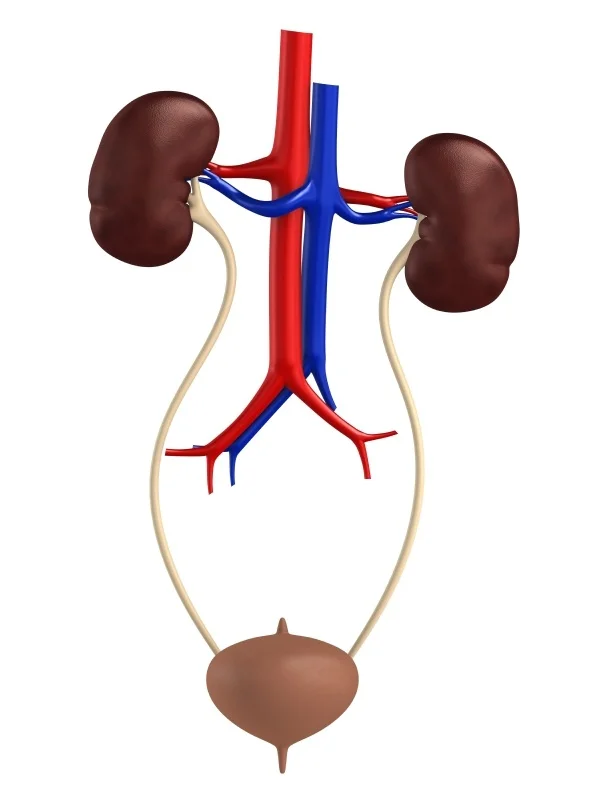Ureteral Reimplantation
The Urinary System
The urinary system’s function is to filter blood and create urine as a waste by-product. The organs of the urinary system include the kidneys, renal pelvis, ureters, bladder, and urethra.
The body takes nutrients from food and converts them to energy. After the body has taken the food components that it needs, waste products are left behind in the bowel and the blood.
The kidney and urinary systems help the body to eliminate liquid waste called urea, and to keep chemicals, such as potassium and sodium, and water in balance. Urea is produced when foods containing protein, such as meat, poultry, and certain vegetables, are broken down in the body. Urea is carried in the bloodstream to the kidneys, where it is removed along with water and other wastes in the form of urine.
What is Ureteral Reimplantation
Ureteral reimplantation repositions the ureters in the bladder. It can be done by making an incision above the pubic bone or laparoscopically by inserting cameras through small incisions in the abdomen and/or bladder to perform the surgery.
Ureteral Reimplantation is often used as a treatment of vesicoureteral reflux (VUR) or the backward flow of urine. In VUR, urine flows from the bladder back into the kidney.
Urine’s typical path is from the kidneys through tubes called ureters and then into the bladder. Each of the ureters connects to the bladder in a way that prevents urine from flowing back up the ureter, similar to a one-way valve. If they are not functioning correctly or do not extend far enough into the bladder, urine may flow back up to the kidney. If the urine contains bacteria, the kidney may become infected. The backup can also put extra pressure on the kidney and can cause kidney damage.
Causes
Causes of VUR may include:
- A problem in the way the ureter inserts into the bladder
- A ureter that does not extend far enough into the bladder
- A bladder outlet obstruction, such as a blockage of urine flow from an enlarged prostate gland
- A neurogenic bladder- where a disruption in the nerves associated with urination causes loss of bladder function
- Temporary swelling after a kidney transplant
Who gets VUR?
Factors that increase a person’s chances of developing VUR include:
- Family history
- Congenital abnormalities of the urinary tract
- Birth defects that affect the spinal cord
- Spinal cord injury
- Tumors in the spinal cord or pelvis
Symptoms
In most cases, VUR has no obvious symptoms. However, it is sometimes found after a urinary tract or kidney infection is diagnosed.
Diagnosis
In addition to a physical exam, bodily fluids may be tested with:
- Urine tests
- Blood tests
- Ultrasound
Images may also be taken with:
- CT scan
- Nuclear scans
- Voiding cystourethrogram (VCUG)
- Intravenous pyelogram
Recovery
After surgery, you may need to urinate more often or may feel a sudden need to urinate. You also may have a burning feeling when you urinate. You may notice some blood in your urine. You may have bladder cramps (spasms) while the bladder is healing. This can cause pain or discomfort. Your doctor can give you medicine to help with the pain. Make sure to create a “pain plan” with your doctor before surgery so you are prepared. This makes it easier post-surgery and you don’t have to worry about pain management if your pain is already controlled. These symptoms usually get better in 2 to 4 weeks.
You may have a tube that drains urine from the bladder (urinary catheter). You also may have a tube near the incision to drain fluids at first. After surgery, you may have fewer urinary tract infections. This surgery also may help prevent kidney damage that can happen when urine keeps backing up into the kidneys.
Most people can go back to school or work within one or two weeks after surgery. Make sure to check with your doctor and make any necessary follow-up appointments.


